Types et Soins des Azalées - Tout ce que Vous Devez Savoir Sur Les Azalées
L'azalée, parfois appelée rhododendron (bien qu'il ne s'agisse pas exactement de la même plante), enrichit depuis des années les jardins des particuliers en les rendant magnifiques. Vous vous demandez si vous devez la planter dans votre jardin ? C'est une idée brillante. Mais avant de le faire, assurez-vous de vous renseigner sur les besoins de l'azalée et les dangers qui menacent son bien-être. Grâce à ces connaissances, vous serez en mesure de cultiver de superbes azalées.
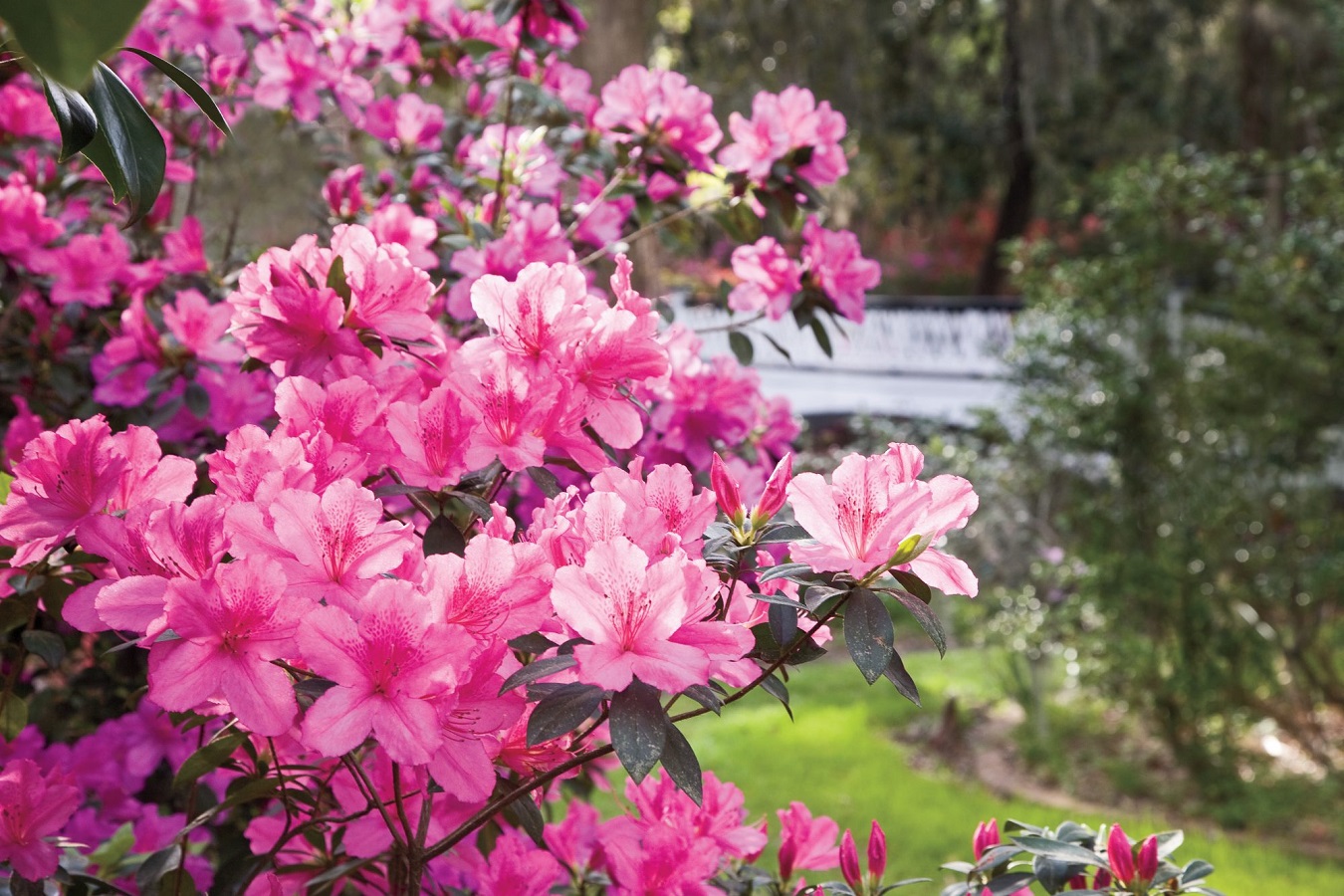
L’azalée - de quel type de plante s’agit-il et à quoi ressemble-t-elle ?
L’azalée est une plante appartenant à la famille Rhododendron (Rhododendron), qui dérive des Ericaceae. Il est intéressant de noter qu’elle peut être cultivée dans des conteneurs (par exemple comme plante d’intérieur), ainsi qu’à l’extérieur, comme arbuste. Cette dernière forme est beaucoup plus courante.
Les fleurs de l’azalée sont célèbres pour leur beauté et leur faction intense et apaisante. Les feuilles de la plante sont également remarquables : elles sont recouvertes de poils délicats.
Les azalées existent en de nombreuses variétés. Vous pouvez en choisir une en fonction de l’endroit où vous allez la cultiver. Les types d’azalées les plus populaires sont les variétés à fleurs multiples, l’azalée jaune pontica et l’azalée japonaise.
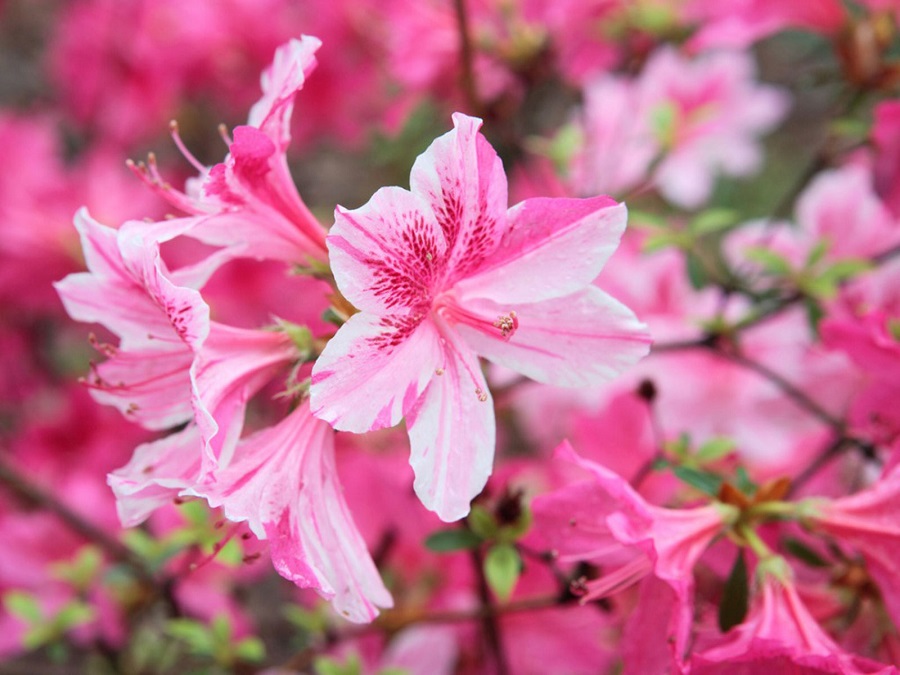
Azalée - types de plantes
Les azalées sont très populaires grâce à leur aspect attrayant. Cela ne signifie pas pour autant que chaque plante a le même aspect. Certaines variétés se distinguent les unes des autres par :
- tailles des fleurs et des feuilles,
- hauteur,
- la résistance aux basses températures.
Les azalées japonaises sont le groupe de plantes le plus populaire. Elles ne poussent pas en hauteur - 100 cm est la hauteur maximale. Pendant la période de floraison, elles développent de nombreuses fleurs magnifiques et odorantes. Les types d’azalées japonaises les plus populaires comprennent :
- Ledikanense,
- Schneeperle,
- Geisha Orange,
- Rose Kermesina,
- Silver Queen,
- Hachmann’s Rokoko.
Les azalées développant des fleurs multiples sur une tige sont un choix courant parmi les jardiniers. C’est un type parfait pour les grands jardins, car ce buisson peut atteindre jusqu’à 2 mètres de haut. Il est intéressant de noter qu’il est également résistant aux températures élevées. Ce groupe comprend des types tels que :
- Cannon’s Double,
- Feux d’artifice ,
- Irène Koster,
- Klondyke ,
- Homebush,
- Golden Sunset,
- Persil.

Quel est le meilleur sol pour les plantes d’azalée ?
Bien que les azalées poussent parfaitement dans différents types de sol, nous recommandons de fournir à la plante les meilleures conditions possibles. Ce facteur affecte la durée de la floraison d’une azalée, ainsi que le nombre de fleurs qu’elle développe. Le meilleur sol pour les azalées doit être :
- perméable,
- légèrement acide (pH 4,5-5,5),
- modérément humide.
L’azalée ne supporte pas les sols trop secs, mais le sol ne doit pas non plus être trop humide. Les sols sableux conviennent mieux après y avoir mélangé un peu de tourbe. Un sol trop dense doit être acidifié pour le rendre plus meuble.
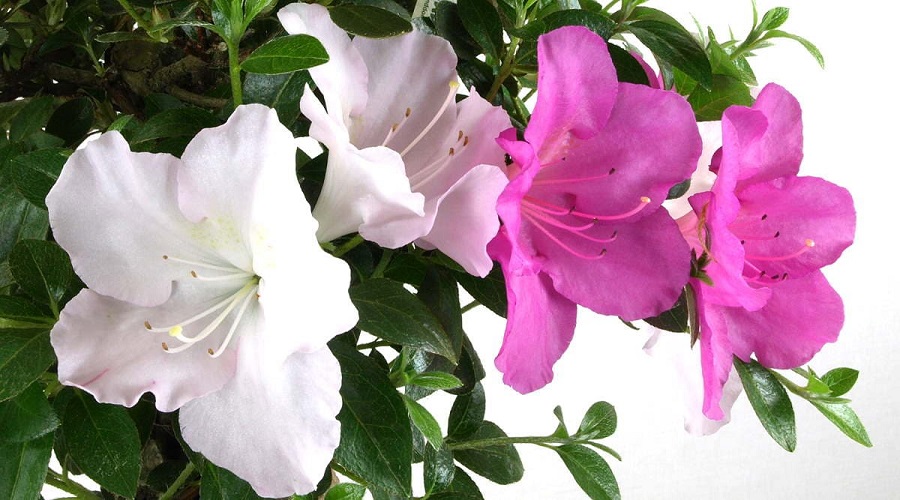
Quel est le meilleur endroit pour un buisson d’azalée ?
L’azalée pousse le mieux dans des endroits semi-ensoleillés. La plante a besoin de la lumière du soleil pour se développer, mais les rayons ne doivent pas être trop intenses, car cela pourrait forcer une floraison précoce alors qu’il y a encore un risque de gel.
La protection contre le vent est un aspect très important de l’entretien de l’azalée, car la plante devient un grand buisson et les coups violents peuvent endommager ses branches.
À quelle fréquence faut-il arroser les azalées ?
Les azalées ont besoin d’un sol modérément humide. Ne l’arrosez pas trop fréquemment ni trop intensément, mais veillez à ne pas négliger l’arrosage, car cela pourrait faire dépérir la plante et lui faire perdre ses feuilles.
Un buisson d’azalée peut avoir besoin d’être arrosé tous les jours pendant l’été, mais en plus petites quantités. Faites-le tôt le matin ou tard le soir pour éviter la lumière directe du soleil.
Les azalées cultivées en conteneurs à l’intérieur ont des exigences différentes. Dans ce cas, l’arrosage est moins fréquent - tous les quelques jours ou en fonction des besoins observés de la plante.
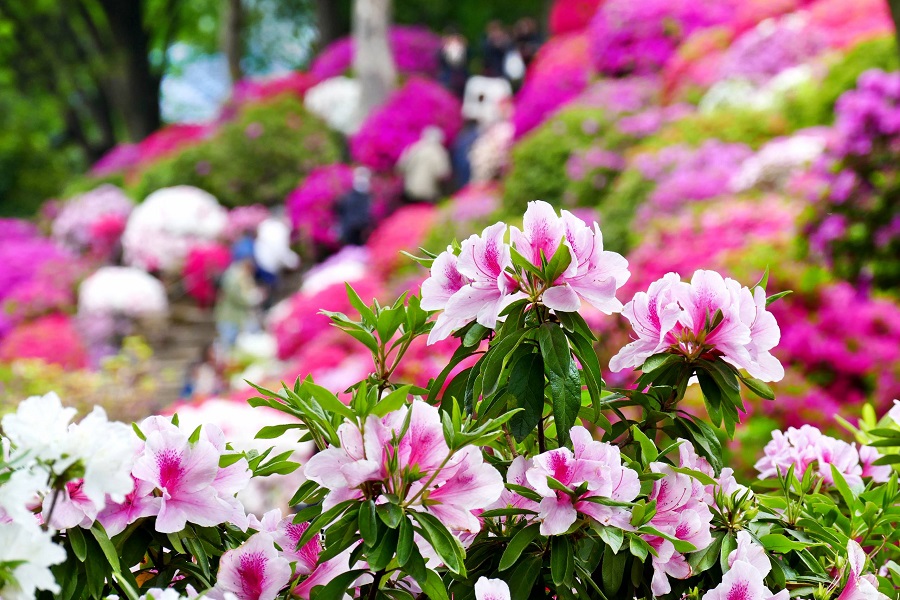
Engrais pour azalée - Quand fertiliser les azalées ?
Les azalées ont besoin d’être nourries régulièrement. Grâce à cela, vous pouvez vous assurer qu’elles reçoivent tous les nutriments nécessaires à une belle croissance et à une belle floraison. Mais faites attention aux produits que vous utilisez. Ils ne doivent pas contenir d’oxyde de calcium, car l’azalée a besoin d’un sol acide. Tout engrais conçu pour les plantes du groupe des Ericacées convient.
Quant à savoir quand fertiliser les azalées, cela dépend surtout du produit que vous choisissez. Dans ce cas, consultez les informations fournies par le fabricant ou demandez à un expert dans le magasin de jardinage où vous achetez l’engrais.
Quand planter un buisson d’azalée ?
Les buissons d’azalée peuvent être plantés du printemps à l’automne sans problème, mais ne le faites pas sans préparation préalable. La plante a besoin d’être endurcie. Pour ce faire, il faut immerger le pot avec la plante dans de l’eau de pluie. De cette façon, l’azalée s’habitue aux conditions extérieures.
Quand les azalées fleurissent-elles ?
Les azalées fleurissent entre mai et juin, ce qui dépend en grande partie des conditions météorologiques et des soins apportés à la plante. En choisissant un mauvais emplacement pour une azalée, la plante peut développer ses boutons floraux plus tôt ou plus tard. C’est pourquoi il est important de prêter attention à tous les aspects des soins apportés aux azalées.
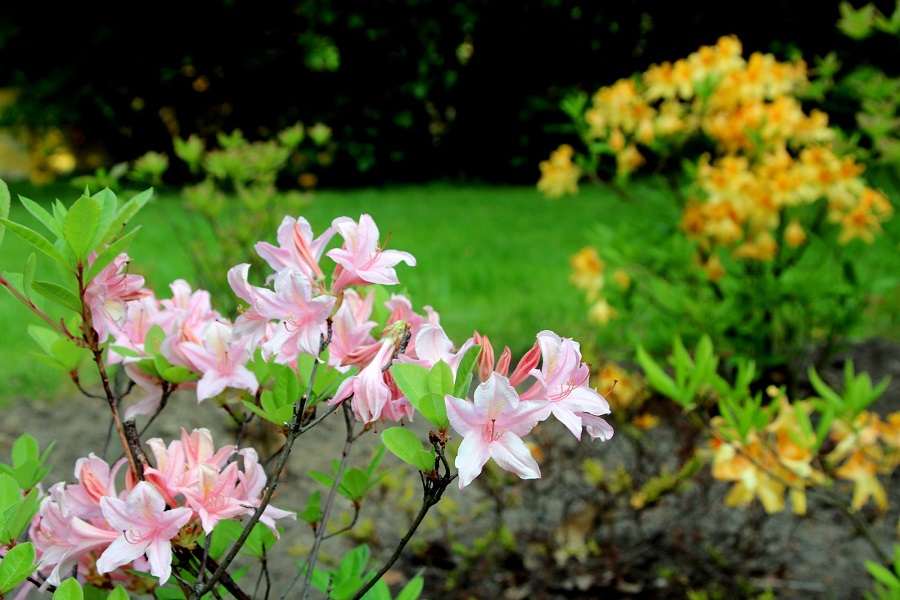
Azalée japonaise - taille
Les azalées ont besoin d’être taillées - mais cela ne peut pas être fait au hasard. Veillez à suivre les conseils des experts qui savent le mieux comment prendre soin d’une telle plante. Il faut tailler les azalées après la fin de leur floraison. Les tiges qui poussent à partir des branches principales de l’arbuste sont raccourcies. Il ne faut pas toutes les couper, mais seulement 1/6 de l’ensemble De cette façon, l’arbuste a une chance de développer plus de feuillage sur les côtés.
Maladies et ravageurs de l’azalée
L’azalée est assez résistante aux parasites. S’ils sont détectés suffisamment tôt, les pucerons, les tétranyques, les cochenilles, les collemboles et même les thrips peuvent être éliminés en un rien de temps - à l’aide de remèdes maison ou de produits chimiques.
Malheureusement, les azalées sont sujettes à diverses maladies. La moisissure grise est la plus dangereuse. Elle apparaît généralement au début du printemps et peut entraîner une entrave à la croissance de la plante. Il est important de protéger l’azalée des changements de température fréquents et de la surchauffe des feuilles. Si des moisissures apparaissent, utilisez immédiatement le produit antifongique adéquat.
Les autres dangers qui guettent les plantes d’azalée sont les suivants :
- chlorose,
- taches sur les feuilles,
- tiges flétries,
- phytophthora,
- la tache brune.
Chacun des problèmes mentionnés nécessite une action particulière pour l’éliminer. Parfois, il suffit de pulvériser la plante avec des solutions naturelles. Si elles ne fonctionnent pas, des produits chimiques achetés en magasin peuvent être nécessaires.
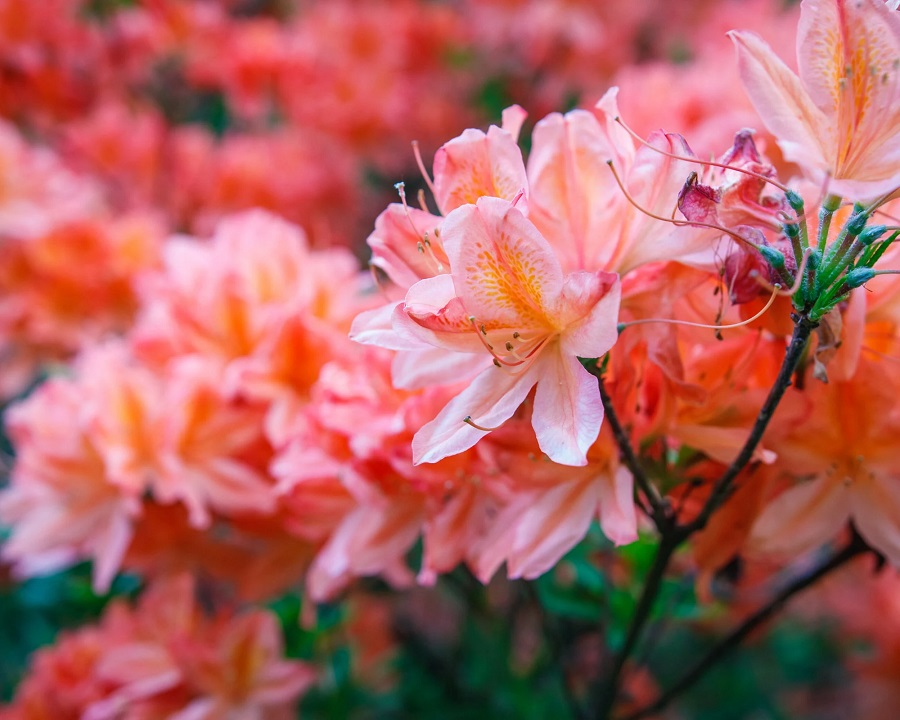
📍 A quoi ressemble une azalée ?
L'azalée est une plante ressemblant à un arbuste qui peut atteindre 1 à 2 mètres de haut, selon la variété. Elle se caractérise par une floraison abondante. Les feuilles de l'azalée sont également distinctes - fines, ovales et velues. Les fleurs ressemblent à de petites coupes, bien que leur forme dépende du type d'azalée.
📍 Quand l'azalée fleurit-elle ?
En moyenne, les azalées fleurissent entre mai et juin. N'oubliez pas que l'endroit où pousse la plante et les conditions météorologiques ont une incidence sur la floraison. En cas d'exposition intense au soleil, une azalée peut développer des boutons de fleurs plus tôt. Si elle pousse en pleine ombre, ils peuvent apparaître plus tard que prévu.
📍 Quand planter l'azalée japonaise ?
Les azalées japonaises ne sont pas difficiles à planter. Vous pouvez les mettre en terre à tout moment entre le printemps et l'automne. Il est important d'endurcir la plante avant de la planter. Pour ce faire, placez le pot avec la plante dans de l'eau de pluie.
📍 Comment arroser les azalées ?
Les azalées ne supportent pas un sol trop sec ou trop humide, il faut donc les arroser avec précaution. L'arrosage dépend du temps - s'il pleut, l'arrosage peut être inutile, tandis que pendant une sécheresse, il peut être nécessaire d'arroser la plante plus fréquemment et de brumiser ses feuilles.
Articles de fond




